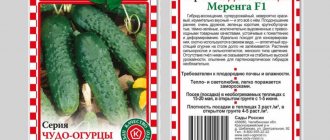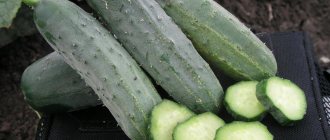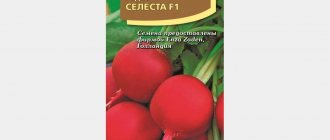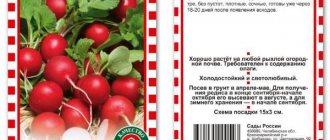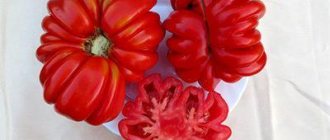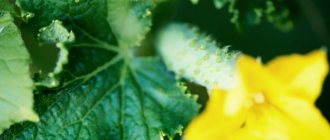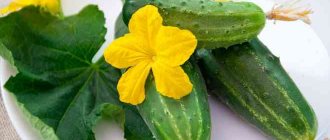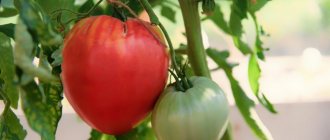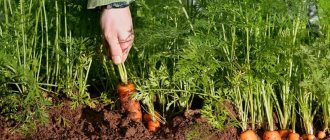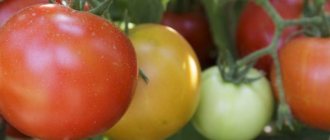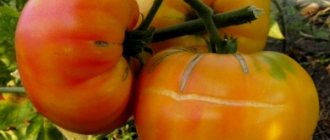History of the variety's creation
The Pasalimo f1 hybrid was bred by breeders from the Dutch seed breeding company Syngenta Seeds BV at the turn of the 20th and 21st centuries. This hybrid was included in the Russian State Register in 2005 and zoned for cultivation in most regions of the country. The Pasalimo f1 cucumber belongs to the parthenocarpic type and does not require pollination by bees, so it can be grown in garden beds and indoors. The latter is important for those regions where summer is short and with sudden changes in weather, so heat-loving cucumbers are usually grown in greenhouses, where pollinating bees do not always have the opportunity to enter.
The best varieties of cucumbers!
• High-yielding cucumber hybrid BERENDEY F1 • Cucumber variety GINGA F1 • Cucumbers DIRECTOR F1
Cucumber Pasalimo f1: variety description
This hybrid can withstand weather changes quite well, but it is better to protect the Pasalimo f1 bushes from hypothermia and in the conditions of the middle zone, the Urals, and Siberia, it is better to plant the variety in a greenhouse or greenhouse.
This gherkin hybrid is ultra-early - from the moment the sprouts appear until the ripe gherkins are harvested, only 1-1.5 months pass. But the variety can bear fruit until the coldest weather.
Cucumbers Pasalimo photo
Fruits can be collected at different stages of development:
- pickles – up to 5 cm long;
- gherkins – up to 8 cm long.
Only female flowers bloom on the shoots; male flowers do not appear, so there are simply no barren flowers on the shoots.
The bushes are of indeterminate type with unlimited growth of the central shoot. Its length can reach 1.7-1.9 m; at this height, the top of the shoot is usually pinched, activating the growth of side shoots. Bushes - with medium growth of lateral stems, well leafy. The foliage is medium in size, typically cucumber with slight drooping, soft green in size. Flowers appear in short internodes; they are collected in bunches of 7-11 pieces.
Ripe cucumbers of the Pasalimo variety are smooth, approximately the same size, with a slight bumpiness. The thick, crispy skin is covered with light spikes, its color is soft emerald with short light stripes.
Taste characteristics of Pasalimo cucumber
The weight of the collected Pasalimo gherkins is about 80 g, the pickles weigh 15-20 g less. The juicy, dense flesh crunches pleasantly, has no bitterness, and the skin is practically not felt when eating gherkins fresh. The taste of ripe gherkins and pickles is excellent, and the presentation of the harvested crop is beyond praise. If cucumbers are not picked on time, they do not overgrow and do not lose their wonderful taste and subtle cucumber aroma.
Productivity of cucumbers Pasalimo f1
The yield of the Pasalimo cucumber is high - at least 13-14 kg of ripe greens are usually collected from 1 m2. The harvested crop tolerates transportation well without losing its good presentation and taste. The collected fruits can remain in the refrigerator for about two weeks.
The best cucumbers! Descriptions and reviews of varieties!
• Mega-popular hybrid cucumber MASHA F1 • Early cucumbers GERMAN F1 • Greenhouse hybrid EMERALD STREAM F1 • Late-ripening cucumbers PHOENIX
Ripe pickles and gherkins Pasalimo f1 are a universal type; they can be eaten fresh, in salads, and also for canning. Moreover, salted and pickled cucumbers are crispy, tender, and retain their taste. During the preservation process, no voids appear in the pulp of these cucumbers.
Hybrid Pasalimo f1 is highly resistant to most diseases affecting cucumber crops, including cladosporiosis, powdery mildew, and cucumber mosaic virus.
How to care for crops
To get the maximum benefit from the Pasalimo F1 cucumber variety, they need to be well looked after and harvested in a timely manner.
Watering and fertilizing
Cucumbers of the Pasalimo F1 variety need regular and proper watering. Insufficient watering negatively affects the yield and taste of this vegetable.
It is recommended to water the plants approximately once every 5–7 days. But it is worth noting that the amount of watering depends largely on weather conditions. In hot weather, watering should be done more often, every 1-2 days, and when rainy weather occurs, watering should be stopped.
Watering is carried out according to the following calculation - about 1 bucket of water is used for 1 m² or for each adult bush. It is best to use the drip irrigation method. In sunny weather, you should water only at the roots, as moisture on the leaves can cause sunburn. It is best to carry out this process in the evening hours.
Find out also how to water cucumbers in a greenhouse correctly and how often.
To maximize the yield of the crop, it is necessary to carry out at least 3–5 feedings during the entire growing season. Lack of nutrients leads to cucumbers becoming small, losing shape, color and taste.
The first feeding is done when the first shoots appear. To do this, use organic fertilizers - rotted manure or bird droppings. Such organic matter with a volume of 1 liter is diluted in 10 liters of water, 0.5 liters of wood ash are added, as well as mineral fertilizers (15 g of urea, 50 g of superphosphate, 15 g of potassium sulfate). During the period of fruit ripening, the volume of nitrogen and potassium fertilizers is doubled.
It is also useful to carry out foliar feeding. To do this, you can spray every 14–20 days with a solution prepared from the following ratio: 5 g of ammonium nitrate, 10 g of superphosphate and 8 g of potassium sulfate per 10 liters of liquid. One bucket with a volume of 10 liters is enough for a 30 m² area with planting.
Forming and tying a bush
To ensure proper formation of the bush, pinching is done. When 6-7 leaves appear, the main stem is pinched above the 5th or 6th leaf - this stops the plant’s growth in height and promotes the appearance of side vines, on which the ovary will subsequently appear, which will greatly increase the yield of the plant crop.
To prevent the fruits from ending up on the ground and starting to rot, the vines of the plant must be tied to pre-installed trellises. To install them, supports made of wood or metal 1–1.2 m high are dug into the ground, and a rope or wire is pulled between them. The whips are tied to this structure.
Important! Old women's tights, soft rags or ribbons are used as material for garters. It is necessary to use only fabric that is soft in structure so as not to damage the shoots.
Soil care
After watering, you should loosen the soil around the cucumbers to a depth of about 5–7 cm. This will prevent the appearance of a crust on top of the soil and improve the flow of water and air to the plant crop. Simultaneously with loosening, weeds are removed, which draw moisture and nutrients from the soil.
To prevent drying out, as well as to prevent the appearance of weeds, it is recommended to mulch the soil near the bushes. Straw, peat, sawdust, manure, and humus are used as mulch.
Diseases and pests of the variety
Cucumbers of the Pasalimo F1 variety are resistant to diseases such as powdery mildew, cladosporiosis, and cucumber mosaic.
If you observe crop rotation and carefully care for this plant crop, then no diseases are scary. But watering with cold water, heavy cold rains, lack of solar heat, and temperature changes can provoke the appearance of certain diseases, including various types of rot. To combat such diseases, appropriate chemical preparations are used (Fitosporin, Bordeaux mixture).
Cucumbers Pasalimo F1: cultivation, planting and care
This hybrid grows and bears fruit better on loamy, fertile soils, where soil drainage must be ensured. The Pasalimo cucumber should be planted in a well-lit area protected from drafts and cold winds.
Following the rules of crop rotation, Pasalimo cucumber should be planted after the following crops:
- vegetables from the nightshade family (tomatoes, eggplants, peppers);
- Luke;
- legumes (peas, beans);
- vegetable crops from the cruciferous family.
In the south of Russia, Pasalimo cucumber seeds are planted immediately in open ground; in colder regions, seedlings can first be grown at home, and at the stage of 4-5 permanent leaves, seedlings can be planted in a greenhouse.
In the central regions of the country, transplanting Pasalimo cucumber seedlings to a permanent place is carried out from the middle of the second ten days of May, when the night air temperature does not stably drop below 17-18 degrees Celsius.
When caring for these cucumbers in the beds, you need to ensure that the plant does not increase the vegetative mass to the detriment of the formation of ovaries. To do this, you should not add too much fertilizer and fertilizer containing nitrogen to the soil.
Cucumber Pasalimo F1 photo
In greenhouses, it is better to tie long vines to trellises - in this case, the bushes are easier to care for, the ripe fruits do not come into contact with the ground, and the harvest is easier to harvest. During the care process, you should follow the watering regime, remove weeds, apply a sufficient amount of fertilizer and fertilize the Pasalimo cucumber regularly.
Methods for planting cucumbers
In the southern and central regions, the Pasalimo F1 cucumber variety can be sown directly into the ground. In the northern regions and for collecting early produce, they are grown using seedlings.
Seedling method
Cucumber seedlings can be grown indoors.
Soil requirements and container sizes
Cucumbers need light, nutritious soil. You can buy universal soil at an agricultural store, or you can make it yourself: for example, mix turf, compost, peat and sand (2:2:1:1). You can add a little ash or mineral fertilizer to the soil mixture (50 g of azophosphate per 10 l). The homemade mixture must be disinfected by pouring manganese or copper sulfate solution.
Important! Cucumbers cannot be grown in boxes. Each plant should have its own container, since this crop does not tolerate unnecessary transplants.
A variety of containers are used - peat pots and tablets, special trays, cassettes, individual pots. Waste materials are often used as containers for obtaining seedlings - plastic bottles, milk and kefir packaging. They are cut off, drainage holes are made in them, drainage is filled with polystyrene foam, broken brick or expanded clay, and then with prepared soil. It is not recommended to plant cucumbers in containers smaller than 8x8 cm.
Preparation and technology of sowing seeds
Seeds in packaging from a good manufacturer usually no longer require preparation for planting in the form of rejection or disinfection. They can be planted directly in prepared soil or undergo a germination or hardening procedure before doing so.
Germinate the seeds by wrapping them in damp gauze and placing them in a warm place. The moisture content of the material is constantly maintained by covering the container with it with a lid. In a couple of days, roots should appear on the seeds - the pecked specimens can already be planted.
Hardening off the seeds will allow plants to adapt to lower temperatures. To do this, the seed material is wrapped in a damp cloth and kept in the refrigerator for 36 hours.
If you bought seeds by weight, you must first disinfect them in a weak solution of potassium permanganate for 30 minutes and then rinse them with water.
You will be interested to know about the best varieties of Chinese cucumbers.
Plant 1–2 seeds in a separate container to a depth of 1.5–2 cm. After the sprouts appear, always leave one, the strongest one.
Seedling care
Subsequent care for seedlings is as follows:
- It is necessary to ensure the temperature regime during the day is within +21...+23°C, and at night - +16...18°C. Containers with plants should be placed in a well-lit place, but without direct sunlight. Lack of light leads to thinning of seedlings - they stretch out, so in poor lighting you need to illuminate them with LED lamps.
- It should be watered with moderately settled water at room temperature every day. It is also necessary to spray with water using a spray bottle.
- Fertilizing should be done at least 2 times. The first application of fertilizers is done 14 days after the emergence of seedlings - at the root along with watering in the morning. For this purpose, it is good to use a urea solution at the rate of 1 teaspoon per 250 ml of liquid. You can also purchase ready-made fertilizers at a garden store (“Fertility”, “Breadwinner”). The second feeding is done when 2 true leaves appear. To do this, take 1 tbsp. a spoonful of wood ash, 1 teaspoon of “Nitrophoska”, 3 liters of liquid. Approximately 200–250 g are poured per plant.
Planting seedlings in a permanent place
Cucumber seedlings are ready for planting in the ground 20–25 days after germination. Planting into the soil is carried out towards the end of spring, when frosts on the soil are no longer predicted. The soil must warm up to +14…+16°С. The air temperature should be within +18…+21°С. In the greenhouse, planting is done earlier at the same temperature levels. The day before planting, the seedlings need to be watered.
Important! Seedlings must be hardened off before planting in the ground. For this purpose, it is taken out into the open air: first for several hours, and then the time is gradually increased.
Planting patterns in the ground may be different. When planting seedlings in rows, the distance between them is kept about 1 m, and between the specimens themselves for planting - about 30–40 cm. You can also plant them in a checkerboard pattern: in this case, the distance in width between plants is 50 cm, and in a row - about 30 cm. It is better to water the soil before planting. As the cucumbers grow, shoots are tied onto trellises.
Seedless method
To plant treated seed material directly into the ground, it is important to choose the right place for planting. First of all, it is necessary to observe crop rotation: you cannot plant cucumbers where the predecessors were beets, pumpkins, zucchini or cucumbers. But areas where potatoes, tomatoes, and cabbage previously grew are well suited. It is advisable to choose an area that is well protected from gusts of wind, but well lit by sunlight. Cucumbers do not like shade. They can tolerate slight shading only in southern regions where the sun is hot in summer.
The bed for planting is prepared in advance, preferably in the fall. First, the area must be cleared of residual vegetation and weeds. Then organic fertilizers are added to the soil - mullein (about 5-10 kg per 1 m²), as well as superphosphate and potassium salt (30 g and 20 g per 1 m², respectively).
Did you know? Cucumbers are used in cosmetics. They refresh the complexion, moisturize and smooth the skin, and help relieve puffiness from the eyelids.
If such fertilizing was not applied in the fall, then in the spring, when digging up the site, rotted manure or bird droppings, humus, and compost are used to fertilize the soil. This fertilizer can be applied directly into the holes when planting plants. Supporters of environmentally friendly areas use wood ash instead of mineral fertilizers at the rate of 0.5 liters per 2 m². If the soil on the site is acidic, then it is necessary to add lime (dolomite flour) at the rate of 0.3–0.5 kg per 1 m².
Sowing seeds occurs as follows:
- dig a hole or trench 40 cm deep;
- lay a layer of rotted manure or humus on the bottom;
- mix such organic fertilizers with the soil using a shovel;
- moisten the soil with settled water.
For planting, the vertical method is used, when the cucumbers are subsequently tied to trellises installed nearby. With this planting, long but narrow beds are made with gaps between them of about 0.7–1 m. Cucumbers are planted in the bed so that the gap between them is about 9–10 cm. Planting depth is 2–3 cm. Subsequently, excess plants in rows are removed and a distance of at least 30 cm is left between them.
Advantages and disadvantages of the Pasalimo variety in comparison with other cucumbers
Pasalimo f1 cucumber has the following undeniable advantages:
- high productivity;
- resistance to stress;
- does not require pollination;
- greens - smooth, approximately the same size and weight;
- good presentation and excellent taste;
- tolerates long-distance transportation well;
- versatility of ripe fruits;
- high resistance to most diseases characteristic of cucumber crops.
There are no negative qualities noted in this hybrid.
Cucumber Pasalimo: reviews from those who planted
Over the course of a decade and a half, this gherkin hybrid has become very popular among Russian vegetable growers, who leave their reviews on the forum for this variety. Some of them are given below:
Olga, 47 years old: My family members like gherkins, so I planted Pasalimo f1 cucumbers in my garden. I read that Dutch cucumber hybrids have a large number of positive qualities, which is why I chose this variety. And I didn’t regret it - the cucumbers turned out to be really early-ripening, about 1.5 months passed after planting the seeds, and we were already picking ripening cucumbers, tasty and crispy. In order for new ovaries to form on the shoots, you need to pick ripe greens regularly. The yield was especially shocking - almost a bucket of even, dense cucumbers was harvested every two days. There was enough for food and canning. And part of the harvest went for sale - my cucumbers were in great demand.
Nelly, 56 years old: I live in the Chelyabinsk region, so I grow all my vegetables in a greenhouse. Two seasons ago I planted a bed of Pasalimo cucumbers; my family liked this variety of cucumbers so much that they picked them at the pickle stage and ate them right away. The Pasalimore variety is high-yielding; no sooner had the ripening cucumbers been picked than the next batch of gherkins immediately began to ripen. The only drawback is that you cannot collect Pasalimo cucumber seeds, but you can buy Pasalimo cucumber seeds in almost any gardening store - they are popular.
Elena, 39 years old: In the Krasnodar region, Pasalimo cucumbers grow in open ground. At the beginning of May, I plant the seeds in the beds and cover them with polyethylene in case of unexpected spring frosts, but from mid-May the weather is good, so I remove the cover. I tie the growing vines to a special net, as a result it is easier to care for the bushes and easier to collect ripening fruits.
Cucumber Pasalimo F1 video
In recent decades, vegetable growers have preferred to grow varieties with small-sized fruits, because gherkins have an excellent taste, do not overgrow if they are not picked on time, and do not have bitterness. And the Pasalimo cucumber has all the qualities described above. And its resistance to disease is another plus of the hybrid. Therefore, those who have not decided on the choice of new cucumber varieties for their garden should try growing the Pasalimo f1 variety.
Write reviews about Pasalimo cucumbers on our gardening portal! We will be glad to hear your opinion!
Cucumber Pasalimo: description and characteristics from the manufacturer
Early (from germination to fruiting 39-41 days) parthenocarpic (does not require pollination) hybrid of foreign selection for cultivation in greenhouses and open ground. The plant is powerful, 3-6 ovaries are formed in each node. Fruits, green, medium-tubercular, white-thorned, 6-9 cm long, for pickling, pickling and making salads.
The hybrid is resistant to olive spot, TMV, powdery mildew and cladosporiosis. Productivity 12-15 kg/m2. Sowing seedlings - at the end of April. Planting seedlings in the ground - at the end of May - beginning of June in the phase of 3-4 true leaves. Sowing directly into the ground - in May - June. Planting pattern: 30x70 cm. Regular fruit collection is required (2-3 times a week).
Manufacturer: Gavrish, Prestige, etc.
Seedling care
The Pasalimo cucumber variety produces tall but fragile shoots. Therefore, knowledgeable vegetable growers recommend sowing them for seedlings immediately in separate containers. This will significantly improve the condition of the seedlings, will not stunt their growth, strengthen the stem and develop a strong root system in a short time.
Seedlings need good care, which includes sufficient lighting and maintaining the air temperature at 20-25 °C. Water the sprouted seedlings very moderately, avoiding excessive moisture. It can cause bacterial infections. It is important to remember that the seedling period for cucumber is quite limited and does not exceed 25-30 days. Overgrown seedlings take a long time to take root.
